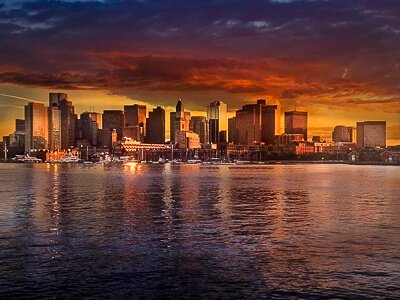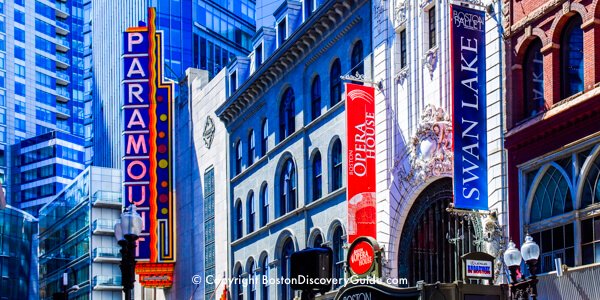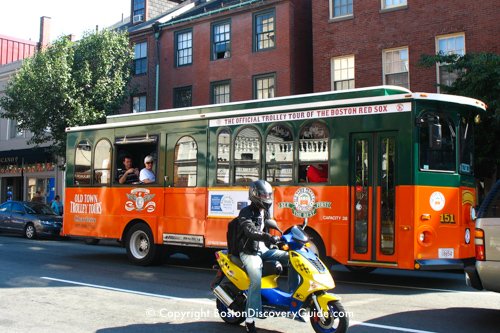Step through the door of Paul Revere's House - now a museum on Boston's Freedom Trail in the North End - and you'll get a fascinating glimpse of middle-class American Colonial life.
When Paul Revere moved here in 1770, the wooden house was already almost 100 years old.
Built around 1677 - 1680, soon after the Great Fire of 1676 destroyed many existing homes, the house occupies the site of an earlier dwelling owned by Puritan ministers Increase Mather and his son Cotton Mather, supporter of the Salem Witch Trials.
The original occupants of Paul Revere's house included wealthy Puritan merchant Robert Howard, his wife Elizabeth, their daughter Sarah, and their slave Samuel.
By the time Revere and his family settled in for what would be a 30-year stay, wealthy Tory supporters of British colonial rule occupied the nearby mansions in the fashionable North Square neighborhood.
Today, Paul Revere's house is the oldest house in central Boston. Despite several alterations, you can still see the late Elizabethan Tudor architectural style popular with Boston's earliest settlers.
Top Photo: Paul Revere's house in Boston's North EndBoston Discovery Guide is a reader-supported publication. When you buy through our links, we may earn a commission at no additional cost for you. Learn more
Paul Revere's House: A Stage for Revere's Radical Politics
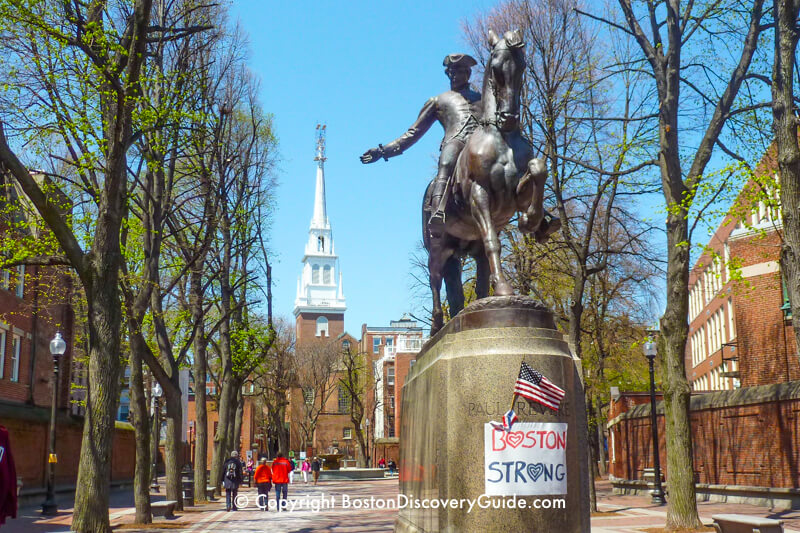
Revere, an up-and-coming silversmith and businessman, outwardly seemed like a good fit for this Loyalist Tory neighborhood.
But almost from the beginning, he had to hide his radical political views from his more conservative neighbors, even as he managed to make "statements."
One of Revere's most famous expressions occurred on March 5, 1771 when he used the front windows of his house to stage an inflammatory reenactment of the Boston Massacre on its 1-year anniversary.
First, Revere stretched oiled paper across each window and then used shadow figures to depict the confrontation between Colonists and British troops, the deaths of the five Patriots, and finally, the dramatic appearance of Patriots' ghosts demanding retribution.
During the next few years, Revere repeatedly sneaked out of his house and past his Tory neighbors to attend secret Sons of Liberty meetings in local taverns, including the Green Dragon near Faneuil Market, and to head down to the harbor for the Boston Tea Party.
Revere's most famous secret mission took place when he covertly rowed across the water to Charlestown to launch his famous midnight ride across the countryside to warn Patriots Samuel Adams and John Hancock that British troops were marching to Concord arrest them.
Because the British troops didn't know their plans had been detected, the Colonial Militias and Minutemen were able to catch them by surprise and force them to flee back to Boston, fighting bloody battles all along the way as the American Revolution began.
Want to see an reenactment of Paul Revere's ride on the eve of the American Revolution? Check the Patriots Day Schedule
Paul Revere's House Today: Museum, Tours, Events
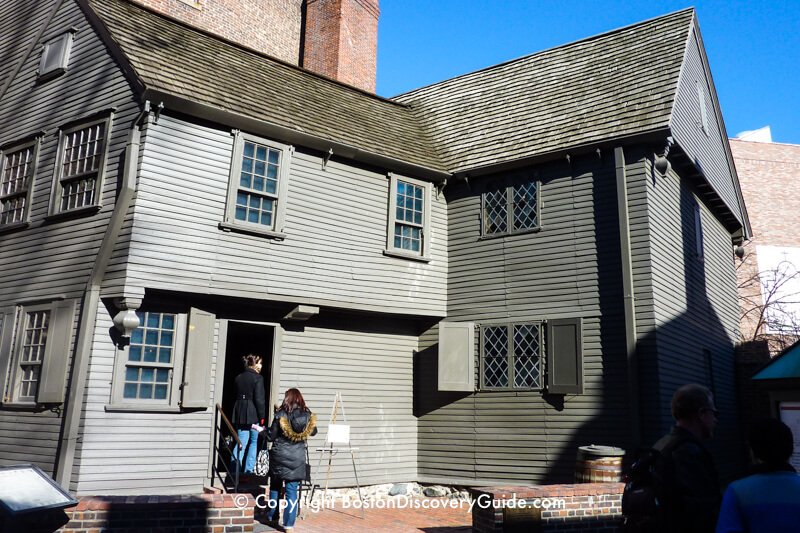
Today, Paul Revere's House is a museum along Boston's Freedom Trail and open for self-directed tours as well as special events, most of which are included in the modest cost of admission. Plan to spend about 30-45 minutes for touring, and longer for events.
Touring the house is interesting for 3 reasons:
- This is where Paul Revere and his huge family really lived - it's not a reproduction.
- You can see some of his actual possessions in the cases around the house
- Because the house is authentic, it gives you a good sense of what many upper-income Boston homes were like during the late 1600s
The main downstairs room is furnished as it might have been when the house's second owner, Robert Howard, purchased it in 1681 soon after it was built. He was wealthy, and the lovely furniture reflects his status.
Items from the Revere household furnish the other rooms, including Rachel Revere's favorite chair, other furniture, Paul Revere's saddlebags and pistols, and various pieces of silver. You'll also see a silver pitcher made by Revere.
Special events include reenactments, music, and hands-on activity activities for kids. Although they take place throughout the year, you can almost always find interesting events scheduled during February school winter breaks, around the time of Patriots Day, and throughout summer months. Check the Paul Revere House website for exact times and schedules, as well as hours and admission fees.
Tours through Boston's History
Directions & Other Information for Paul Revere House Visitors
- Location: 19 North Square, North End, Boston
- Discounts for Paul Revere House: GoBoston card gives you free admission
- More information: 617-523-2338
- Getting there by subway: Orange and Green Lines/Haymarket, and walk across the Greenway to the North End - about 10 minutes
- Park: See Boston Parking Garages near the North End
More about Paul Revere's (Huge) Family & House: History
Ironically, the Paul Revere house that you'll see is only part of the home where Revere and his family lived.
By the time Revere bought the house, a previous owner had already enlarged it by adding a third floor, now removed.
Revere and his huge family needed the space.
He and his first wife, Sara Orne, had 8 children. After Sara died in 1773, he married Rachel Walker, and they had another 8 children. Revere's mom also lived with them for several years.
Not all of the children lived in the house at the same time. Five died in infancy, all too common during that time, and several older children were living elsewhere by the time the younger ones were born - but just the same, the house must have been overflowing with the 6 or 7 kids living there and visits from the older ones.
In the decades after the Revolution, Revere became even more prosperous, and he and his family moved in 1800. Soon after, the North Square neighborhood entered a period of decline as other wealthy occupants moved to more fashionable addresses.
During the 1800s, the Paul Revere House served as a candy store, a bank, a cigar factory, a produce market, and tenement housing for immigrants. Over 700 people are believed to have lived in this house from the time when it was built in the late 1670s to 1902, when Revere's descendants purchased it in order to preserve it as a museum.
A restoration in 1907-08 returned the Paul Revere House to its original 2-story design, smaller than before Revere and his family lived there.
The second floor overhangs the first, making the low-ceilinged rooms seem even darker and smaller.
A massive Elizabethan-style fireplace dominates the main downstairs room. Small diamond-paned windows, considered luxurious back in the 1600s, let in only a little light.
Still, the house must have been warm and cozy during the winter, especially with all those children to fill it. During the summer, the children would have played outdoors and along the nearby water's edge.
More Freedom Trail Tours
Not all Freedom Trail Tours include the North End sites such as Paul Revere's House, but if you choose one that doesn't, you can easily walk there on your own.
Where to See a Statue of Paul Revere
Walk over to Paul Revere Mall, a pedestrian walkway between Hanover and Salem Streets in the North End.
Famous Boston-area sculptor Cyrus Dallin designed the magnificent statue of Paul Revere on a horse (shown above) in 1885, and it was finally cast and installed in 1940.
Take a few moments to read the bronze plaques on the mall's surrounding brick walls recounting interesting histories of other Revolutionary War heroes and people from the neighborhood.
Where to Stay near Paul Revere's House in the North End
Interested in staying in or near Boston's wonderful North End neighborhood, filled with tantalizing Italian restaurants and bakeries?
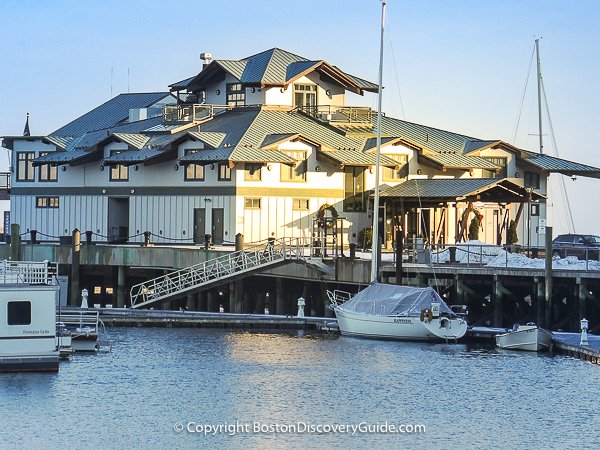
Consider these welcoming choices:
Find more hotels in or near the North End
More Fun Ways to See Boston near the Freedom Trail
Paul Revere and Boston's early setters loved their brew. Find out about Boston's beer culture and history as you sample some of the best on these beer tours:
Boston Freedom Trail Sites
Boston Common | Massachusetts State House | Park Street Church | Granary Burying Ground | King's Chapel | King's Chapel Burying Ground | Benjamin Franklin Statue | Old Corner Bookstore | Old South Meeting House | Old State House | Boston Massacre Memorial | Faneuil Hall | Old North Church | Paul Revere's House | Copp's Hill Burying Ground | Bunker Hill Monument | USS Constitution
More Articles about Boston's Freedom Trail
- Patriots Day Schedule - Find out when the reenactment of Paul Revere's famous ride takes place
- Paul Revere's Midnight Ride - Find out more about Paul Revere's ride to warn that the British were coming
- Boston's Freedom Trail - Find more sites to visit on Boston's famous Walk through History
- Boston's North End - Explore Boston's historic North End neighborhood where you'll find wonderful Italian and seafood restaurants
- Boston History - Want to know more? Our Boston history timeline makes it easy!


